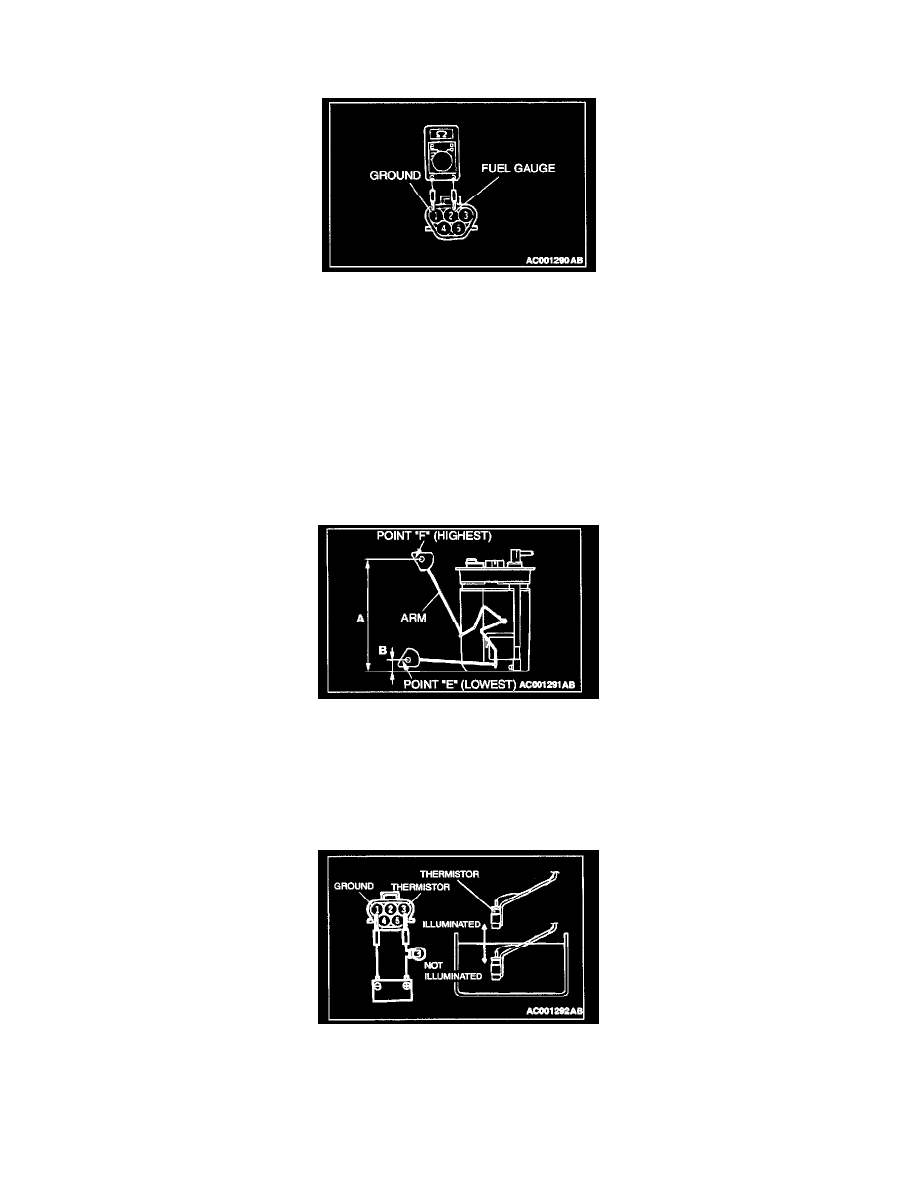Eclipse Spyder GS L4-2350cc 2.4L SOHC MFI (2001)

Fuel Gauge Sender: Testing and Inspection
Fuel Gauge Unit Check
FUEL GAUGE UNIT CHECK
Remove the fuel pump module and the remove the fuel gauge unit.
FUEL GAUGE UNIT RESISTANCE
1. Check that resistance value between the fuel gauge terminal and ground terminal is at the standard value when the fuel gauge unit float is between
point "F" (highest) and point "E" (lowest).
Standard value:
-
Point "F": 3 - 5 ohms
-
Point "E": 110 - 112 ohms
2. Check that resistance value changes smoothly when the float moves slowly between point "F" (highest) and point "E" (lowest).
3. If all checks are correct, go to fuel gauge unit float height check. If any check is not correct, replace the fuel gauge unit.
FUEL GAUGE UNIT FLOAT HEIGHT
1. Move the float and measure height A at point "F" (highest) and B at point "E" (lowest) with the float arm touching stopper.
Standard value:
-
A: 180.3 mm (7.10 Inches)
-
B: 18.8 mm (0.74 Inch)
2. Adjust the float arm to the standard value, then go to the thermistor check.
THERMISTOR
CAUTION: After finishing this test, wipe the unit dry and Install it in the fuel tank.
1. Connect the fuel gauge unit (thermistor) to the battery via a test light (12 V - 3.4 W). Immerse in water.
2. Condition is good if the light goes off when the thermistor is immersed in water and comes on when it is taken out of water.
